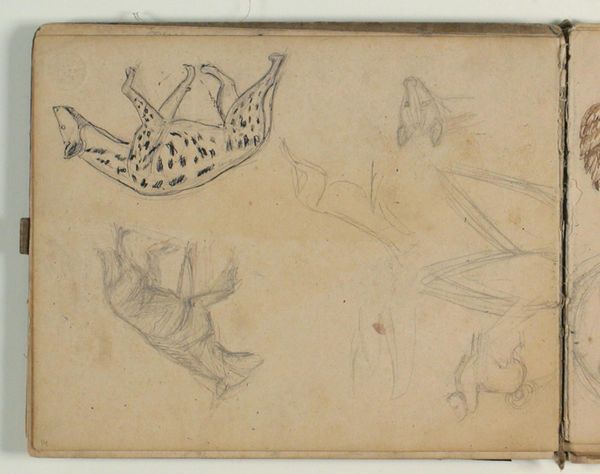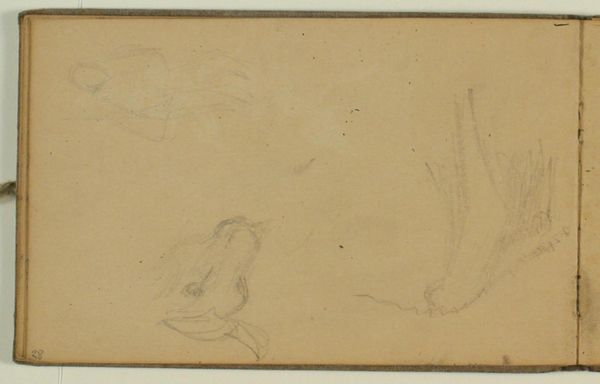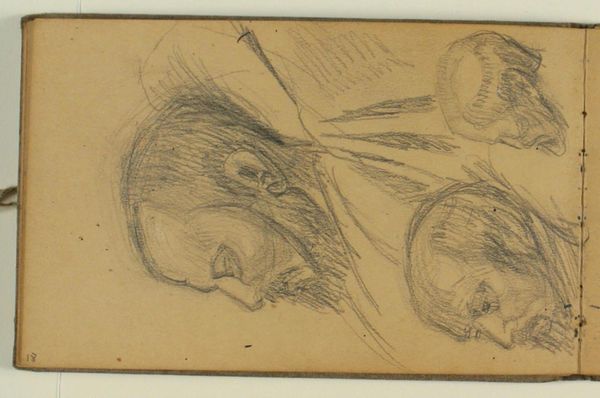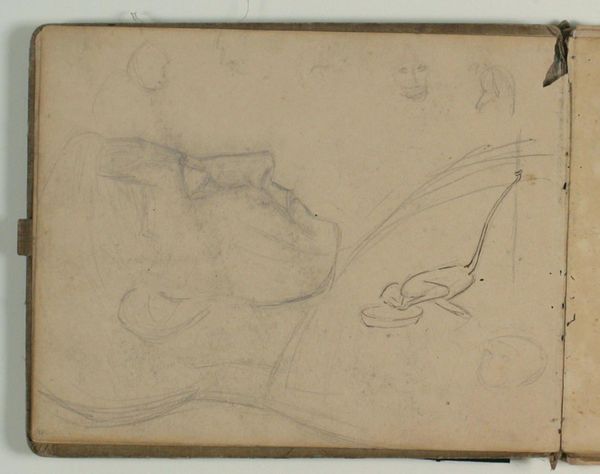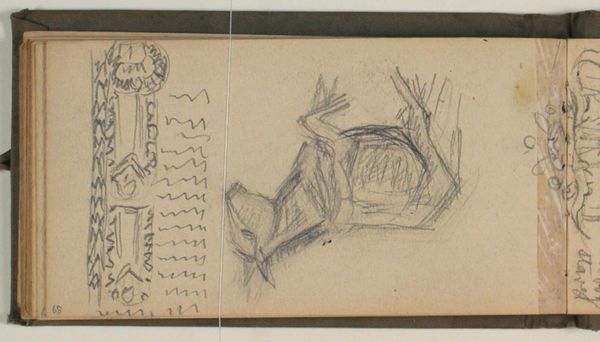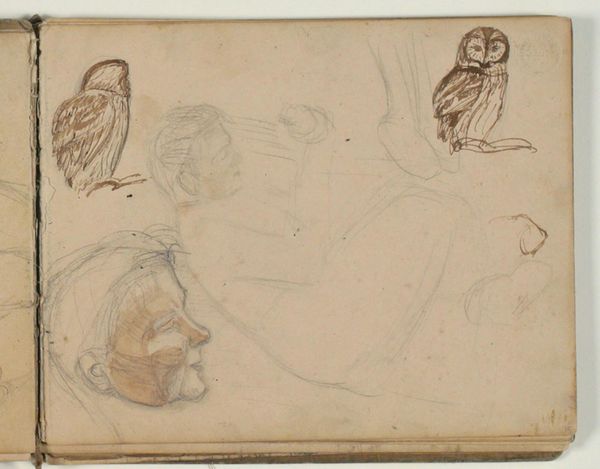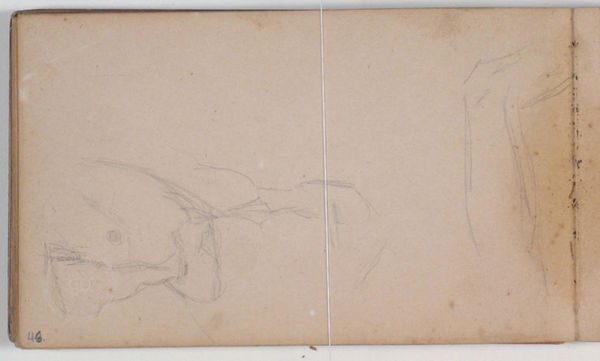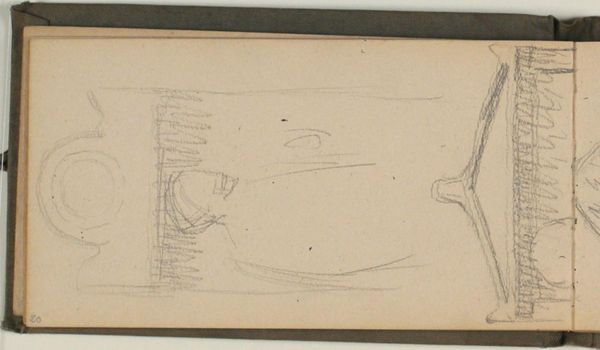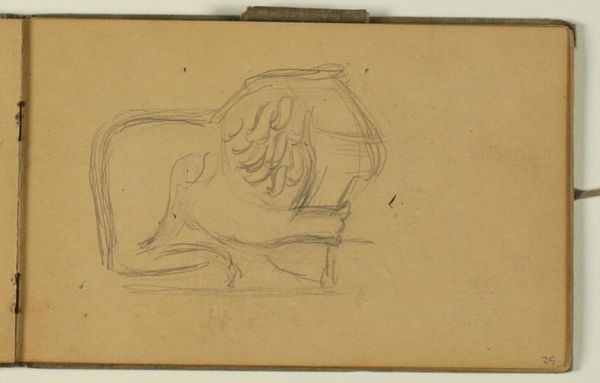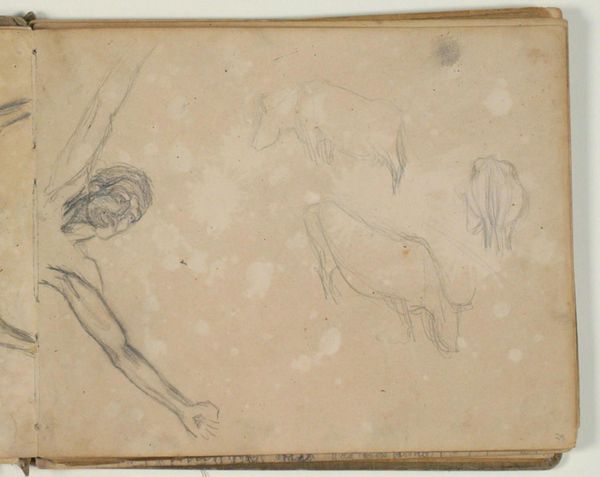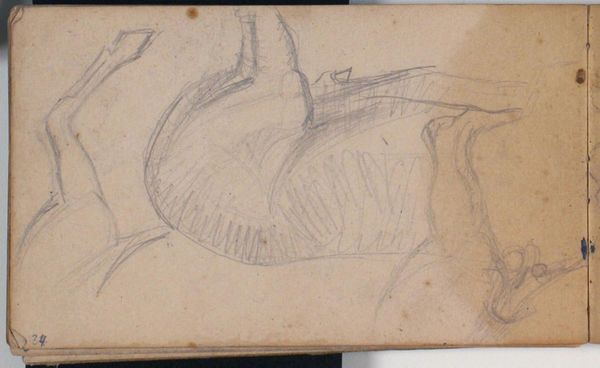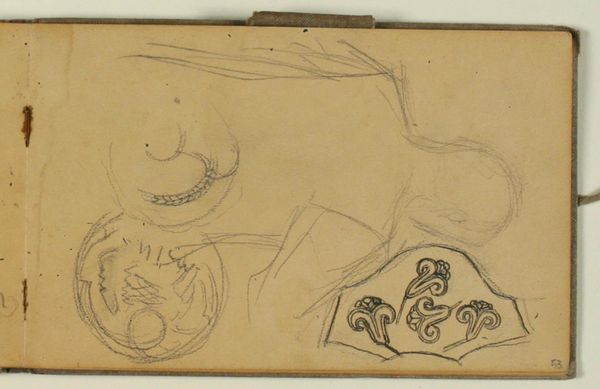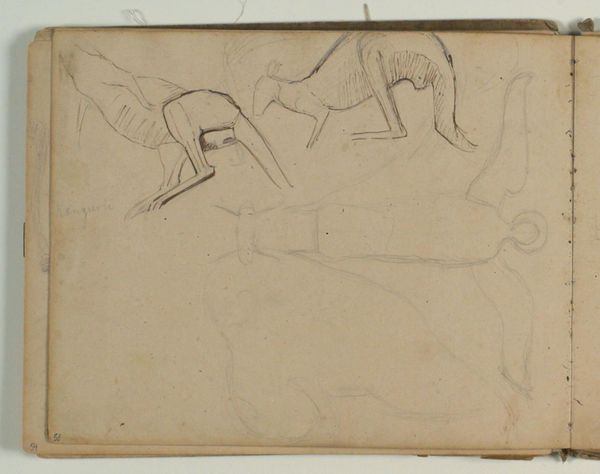
drawing, pencil
#
portrait
#
drawing
#
11_renaissance
#
pencil
Dimensions: 114 mm (height) x 183 mm (width) x 9 mm (depth) (monteringsmaal), 113 mm (height) x 182 mm (width) (bladmaal)
Editor: Here we have "Græsk statuehoved og dyreskitser," or "Greek Statue Head and Animal Sketches," by Niels Larsen Stevns, made between 1900 and 1904. It’s a pencil drawing housed at the SMK in Copenhagen. The contrast between the detailed head and the fleeting animal sketches really catches my eye. What's your perspective on this piece? Curator: The sketch feels immediate, doesn't it? What interests me here is how the artist engages with the classical form. Note the deliberate marks, the artist's labor visible. It raises the question, why this careful study of antiquity at this time? Was it about adopting the techniques from a bygone era for modern use? It feels almost like reverse engineering by directly engaging with the raw, unfiltered qualities and limitations of readily-available art materials such as pencil and paper. Editor: So, it’s less about the *what* and more about the *how*? Are you suggesting it’s the artist's process and the physical act of creation that matters? Curator: Precisely. Think about the pencil itself – a readily available tool, democratizing the means of art production. What does the choice of this accessible material say about Stevns' intention, considering the history and implied meaning behind the subject he has chosen to engage with? Editor: That’s fascinating. I was so focused on the classical reference that I didn’t consider the materiality as a deliberate choice influencing our interpretation of this engagement. Curator: The paper support and sketchbook format equally underscore the piece's origins and purpose. We witness not a final work of art intended for grand exhibition, but rather an intimate moment of investigation where ideas took shape with no aspirations beyond study or skill attainment. Editor: I hadn’t thought about it that way before, seeing it as a production of materials shaped with available tools within a particular socioeconomic context and its effects on the artwork itself. Thanks for shifting my perspective! Curator: Likewise, you prompted me to look at how initial impressions can still be influenced by the traditional definition of classical forms that were never the goal in the first place.
Comments
No comments
Be the first to comment and join the conversation on the ultimate creative platform.
